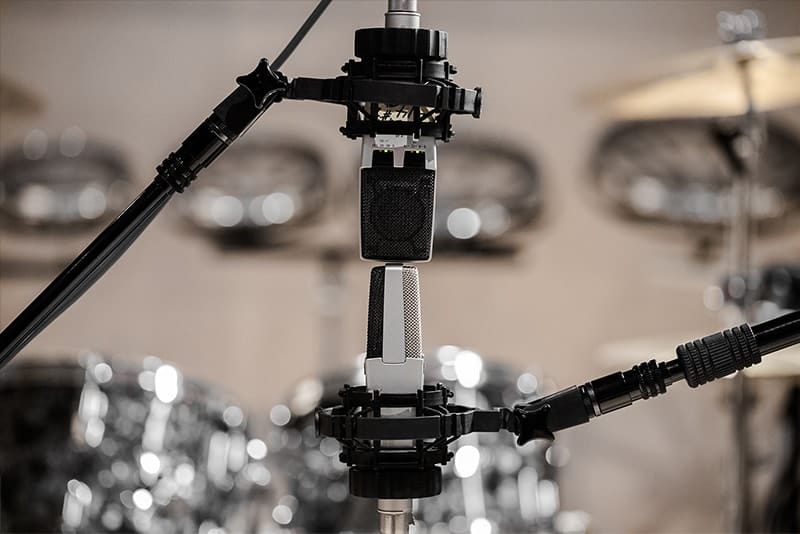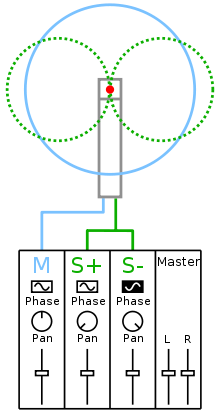DIY M/S Processing & Matrix – TUTORIALS

Mid/Side processing is one of my favourite subjects to talk about and definitely one of my favourite processing techniques to work with as a mastering engineer. M/S provides instant, powerful access to stereo elements in a completely different perspective than standard left-right channel processing. With M/S you have ultimate access on controlling phase issues between L and R channel, better control over hard panned or centred elements, and of course, widening or narrowing the stereo image.
Alan Blumlein (1903-1942) -considered the father of stereophonic sound- patented Mid/Side concept (among other stereo related subjects) in 1933: “United Kingdom patent 394325 ‘Improvements in and relating to Sound-transmission, Sound-recording and Sound-reproducing Systems“.
The idea is well known to recording engineers today: You need one cardioid mic (or omni according to the original patent) and one bi-directional mic. The cardioid mic will provide the “mid” signal and bi-directional mic will provide the “side” signal.

First step is routing the mid signal to the centre of the stereo output. The side signal should be split on the mixer. Pan one instance to the left and the other one should be phase-inverted and paned full right as seen in the image below.

My video tutorials are not about M/S recording though. As a mastering engineer I love to work with the M/S concept afterwards. Encoding and decoding stereo files into M/S processing paths. The principles are simple:
To create mid channel you need to sum L and R channels.
M = L + R
So how can you do that in your DAW or mixer? Just route L and R signals to a mono bus or mono output. Mid is the mono mixdown of the two stereo channels.
Now, to create side you need to subtract R from L.
S = L – R
How you do that? This is once again really simple. First, you need to reverse phase of R so it becomes -R. Then, once again, just mix L and -R into a mono buss. Side is the mono mixdown of L and -R. Easy!
Now that we’re done with encoding mid and side we have to decode them and create the stereo image. First route M signal to the centre of a stereo output/bus. Done! Next step is splitting/duplicating S and reverse the phase of one S instance so it becomes -S. Now pan S to the left and pan -S hard right. That’s it. You can use a VCA/DCA to control simultaneously the level of sides or you can simply alter only the mid with one fader. Reducing mid will provide a more wide stereo image and increasing mid will provide a narrower (mono) image.
In this first video I introduce viewer to the M/S basics, I talk about Wavelab and present well known plug-ins with M/S processing abilities. Shortly after I focus on how you can M/S encode and decode any stereo file on your own, and how you can use any plug-in as a M/S processor in Cubase or any other DAW.
In the second part of my DIY M/S tutorial I demonstrate how you can route your own Mid-Side Matrix. This is a little bit more advanced, so make sure you watch this after watching the “DIY M/S Processing” video.
There’s also an older video available where I demonstrate a M/S matrix I integrated in my audio interface to use ANY stereo outboard gear as a M/S processor:
Enjoy, and if you find all of these useful, subscribe to my youtube channel to support me.
-
Recent Posts
Recent Comments
Archives
Categories
Meta
